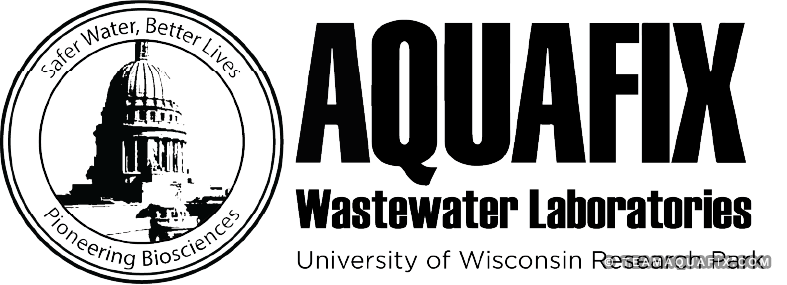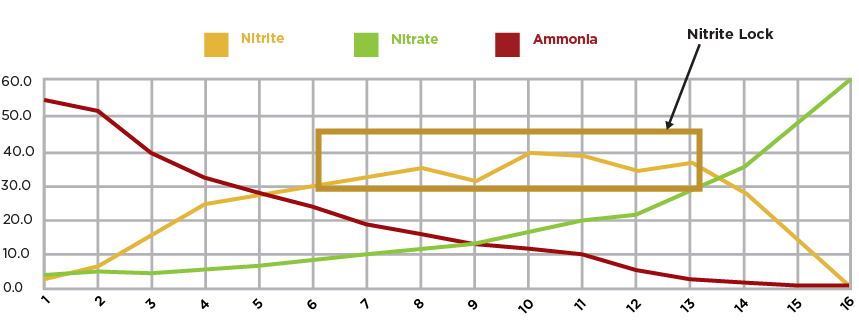
Nitrite Lock
by Mike Lanphier Project Specialist, Aquafix Laboratories
Background
Nitrification is important in wastewater treatment as it helps remove ammonia, which is toxic to many fish. In addition, nitrification reduces nitrogenous oxygen demand (NOD) in wastewater effluents and is the first step in the nitrification/denitrification process. Incomplete nitrification can cause excess nitrite buildup and can temporarily limit ammonia oxidation. An abnormal increase in secondary effluent nitrite is commonly referred to as “nitrite lock.” Nitrite lock happens when the ammonia (NH4) does not go through complete nitrification (NH4 -> NO2 -> NO3 -> N2 gas). Nitrite lock can be a limiting factor in the second step in nitrification of a wastewater plant’s nitrification efficiency. The oxidization of nitrite to nitrate. Nitrite lock will be the slower “rate-limiting” step when it occurs.
What causes high nitrates in wastewater? (Which can lead to nitrite lock.) Sources of high nitrates include runoff from fertilized lawns and cropland, failing on-site septic systems, runoff from animal manure storage areas, and industrial discharges that contain corrosion inhibitors. What happens if nitrate levels are too high in non-wastewater water? High levels can turn skin to a bluish or gray color and cause more serious health effects like weakness, excess heart rate, fatigue, and dizziness. High nitrate levels are especially harmful to fry and young fish and will negatively affect their growth. Furthermore, the same conditions that cause elevated nitrate often cause decreased oxygen levels, which further stress the fish.

